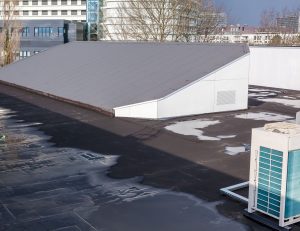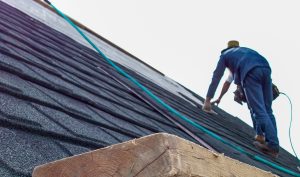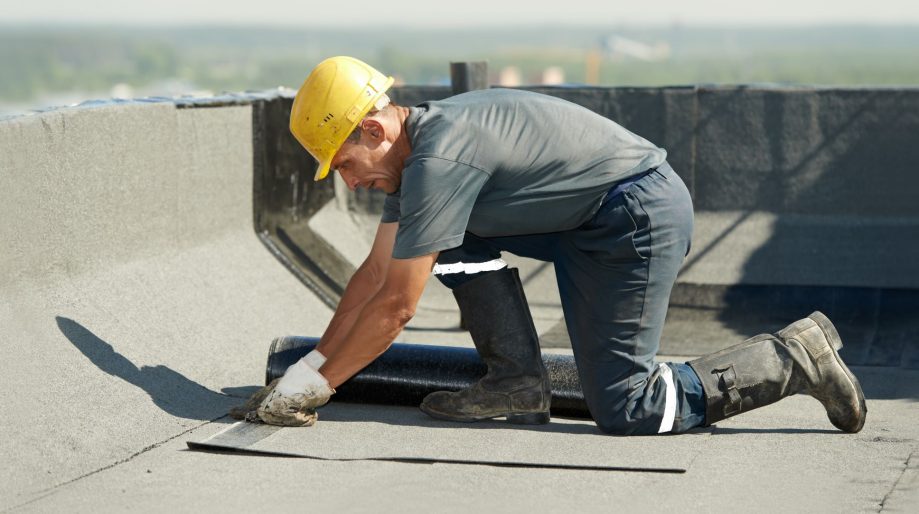Spring is the perfect time to perform a roof inspection to ensure it functions correctly and lasts its intended service life. Roofing is one of the largest capital replacement projects a building will face, yet it is often neglected or ignored unless a resident has reported a leak. But just because the roof isn’t leaking doesn’t mean it doesn’t require maintenance and repairs. Like sunscreen going on before the burn, inspections and regular maintenance will help prevent costly damage.
 Here, Justin Tudor, President, Keller Engineers, shares his top 10 roof inspection tips for flat-roof residential buildings (scroll down for tips related to sloped asphalt shingle roofs):
Here, Justin Tudor, President, Keller Engineers, shares his top 10 roof inspection tips for flat-roof residential buildings (scroll down for tips related to sloped asphalt shingle roofs):
- Check the seams and laps. Many cold- and torch-applied roof systems are installed in a roll format, such as 2-ply modified bitumen, TPO, and EDPM. The laps in the membrane are the natural weak spot on the roof system and bear the brunt of the abuse from freeze thaw cycles common in Canada. After the snow melts, check the seams to ensure they are still fully adhered to the adjacent roll of membrane, then repair and reseal any sections that have debonded.
- Clear away any organic growth. While green roofs are all the rage these days, unintentional green roofs are damaging to roof membranes and lead to premature failure. Any organic growth, such as moss, saplings, weeds and residue typically found at the perimeter of a roof should be removed.
- Inspect low spots for ponding water. As your building shifts and ages, slight adjustments may occur to the sloping of the roof. If the sloping is modified through natural movement, ponding water can occur, which can prematurely degranulate membranes and expose them to harmful UV rays. Additionally, leaks that occur where ponding water is present can cause additional water infiltration that can be difficult to repair.
- Check for sealant failure. Sealant is often thought of as a magical product that keeps all water out of our buildings. However, sealants will harden and lose their elasticity over time, causing them to crack and delaminate from surfaces. As such, sealants should be replaced when they are dry, cracked, hard, or delaminated. It is important that the existing sealant is completely removed prior to new installations as many sealants do not adhere well to one another. Furthermore, selecting the proper sealant for the application is important, as sealants are not ‘one-goop-fits-all’.
- Inspect and clear drains. Flat roofs are usually internally drained, meaning they have a roof drain that catches the water and expels it through piping hidden inside the walls of the building. Drains have numerous parts that all require review and maintenance. The clamping ring bolts should be tight so that they make positive contact with the membrane. The drain cage should be installed and attached to the clamping ring to ensure that no foreign debris gets inside the piping. Lastly, all debris needs to be removed regularly to allow water to flow freely.
- Look for signs of animals and nesting. Birds love making their nests on top of various roof top penetrations, or under the protection of a penthouse. Animals that live on your roof will bring random debris, which leads to drain cloggage. Even worse, animal droppings contain ammonia that will damage roof membranes. As such, nests should be removed from the roof as soon as possible, and prevention steps taken.
- Ensure metal flashings are secure. Flashings are typically capping the parapet and around curbs on the roof. It is important to ensure that they are adequately secured and do not move, bend, or shake in the wind. Loose flashings can be a safety concern, as they could dislodge and hit pedestrians. Loose flashings may also allow water penetration into the roof system.
- Review all penetrations. Your flat roof contains many penetrations, whether they are plumbing stacks, roof anchors, chimneys, or curbs for mechanical equipment. All of these penetrations contain a unique set of challenges when keeping your roof watertight. Each penetration should be carefully reviewed, and any repairs made should be unique to the penetration.
- Check transitional walls. These transitions are found when there are multiple roof levels, or when a penthouse is present on the roof. Transitions typically see multiple trades and building components coming together. Special care should be given to these details to make sure none of the waterproofing components are delaminating or failing. Fixing leaks at transitions is one of the most expensive and difficult leaks to repair, so its important to be diligent to avoid this from happening.
- Inspect parapets. Parapets are one of the most common points of failure on a roof and should be treated with special care. Parapet membranes have the tendency to delaminate from the substrate. When membrane delaminates, the seams in the membrane tend to split open under stress and allow water infiltration.

Here are 10 things to check if your condominium is protected by a sloped asphalt shingle roof:
- Look for shingle degradation. The first sign of asphalt shingle failure is visible changes to the aesthetic of the asphalt shingles. Degranulation and curling are the roof’s way of telling you that they are nearing the end of their service lives. When degranulation and curling worsen, small pieces of the shingle may become dislodged and fall off the roof. Checking for degranulation may be difficult from the ground and therefore a walkover inspection is recommended to ensure accurate documentation is performed.
- Replace missing shingles. Shingles can become dislodged and blow off the roof under high winds. Often these go unnoticed, as the backup membranes tend to blend into the surrounding shingles. If an inspection leads to the discovery of missing shingles, these should be replaced promptly to ensure the roof is not compromised.
- Secure and seal exposed fasteners and nails. Fasteners are used to secure various flashings and cappings on the roof. Contractors either seal the fasteners with sealant or use a neoprene gasketed fastener. In both circumstances, the sealant needs to be refreshed. Additionally, shingles are secured to the roof with nails that are hidden under the adjacent shingles. During installation, nails can be errantly installed and slightly exposed, known as ‘low nails’ or ‘shiners’. These exposed nails may require additional sealant.
- Clear debris in the eavestroughs. Eavestroughing can get clogged with granules from the shingles, organic growth, or a combination of both. Once the eavestrough is clogged, it no longer functions as intended and can force watershed near the foundation wall. As such, the eavestroughing should be cleaned regularly so that it performs as designed.
- Check sealant. Just like flat roofs, sealants on sloped roofs will eventually harden and lose their elasticity, requiring replacement.
- Review the ventilation. Sloped roofs require ventilation to regulate the internal temperatures of the attic space and to remove moisture-laden air, which could migrate into the attic from inside living spaces. Sometimes vents become dislodged, clogged, or break. Vents should be reviewed and repaired during your spring inspection to ensure they perform adequately during the hottest months of the year.
- Inspect and repair penetrations. Sloped roofs, just like flat roofs, contain many penetrations, whether they are plumbing stacks, exhaust vents, chimneys, or roof vents. Each penetration should be carefully reviewed and subsequently repaired.
- Check fascia, soffit, and offset walls. While the asphalt shingles are commonly thought of as the roof’s main protection against water penetration, the fascia, soffit, and offset walls work just as hard to keep water out. These metal flashings can be damaged from hail, heavy rain, or foreign objects. Damaged flashings can lead to water infiltration into the roof system and attic.
- Look for sagging roof decks. Sometimes your roof will show you that it needs some attention when it looks like gently rolling hills. Roof sheathing spans across the roof trusses, and typically bridges about 24” (600mm). By design, if the sheathing starts to weaken, it will sag between the trusses, indicating a problem. While sometimes the sheathing sags naturally, it is important to ensure there was no damage due to snow accumulation.
- Check for ice damming. How can you tell if your roof has ice damming issues if there is no longer snow or ice? Signs may include curling shingles, broken tabs, and excessive degranulation that is not present on the rest of the roof. Catching ice damming early is vital to ensure your roof does not prematurely fail. If your spring inspection shows signs of ice damming, modifications to your attic ventilation system may be required—or in drastic cases, it may involve a full system re-design.
Lastly, whether your condominium is protected by a sloped or a flat roof, it is important to have a trusted industry professional perform a regular roof inspection. While spring is the perfect time for maintenance, a similar check should be done in the fall before the snow comes. There is nothing worse than trying to track a roof leak when it’s covered in two feet of snow!
For more information, please visit www.kellerengineering.com





